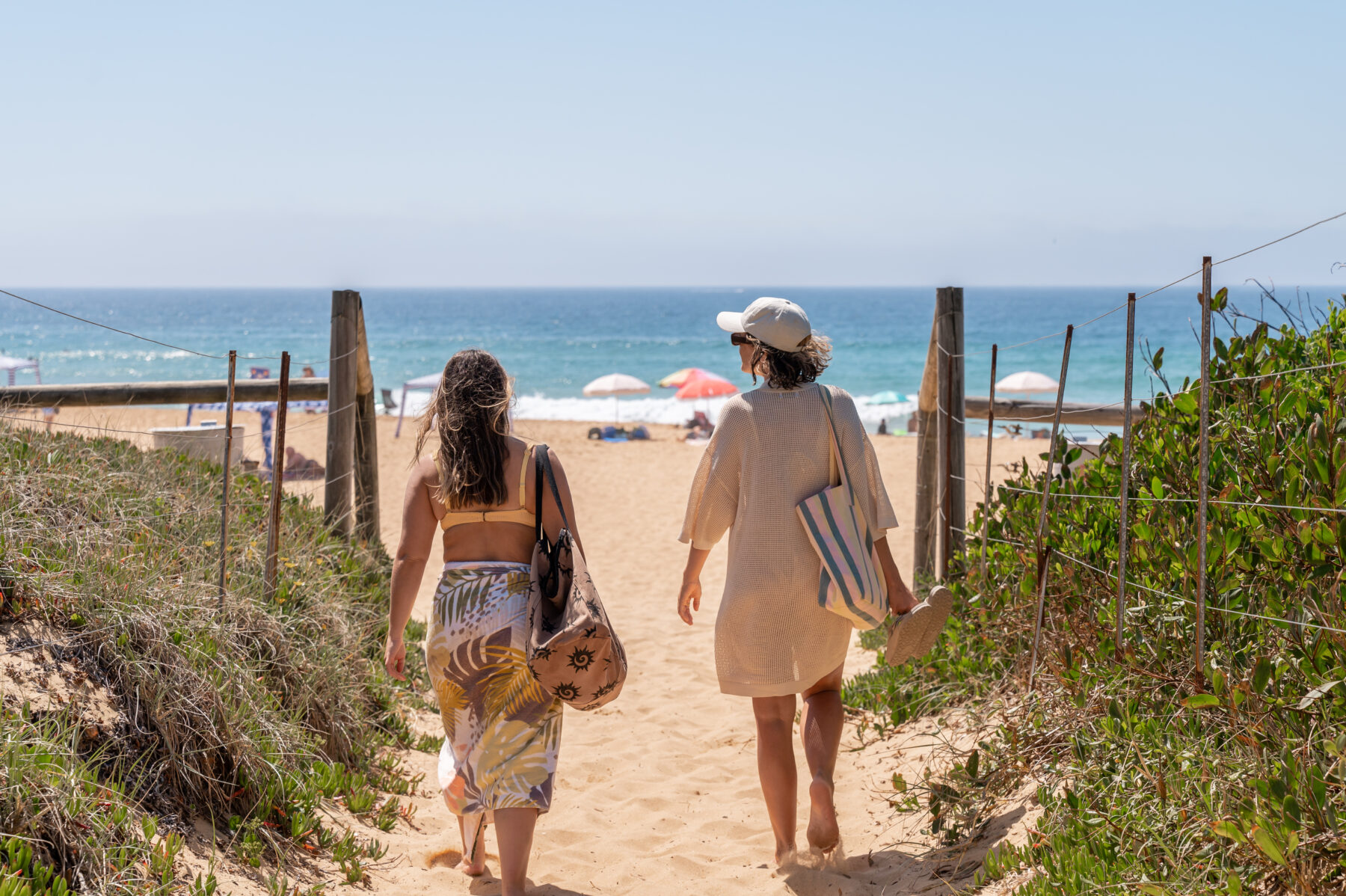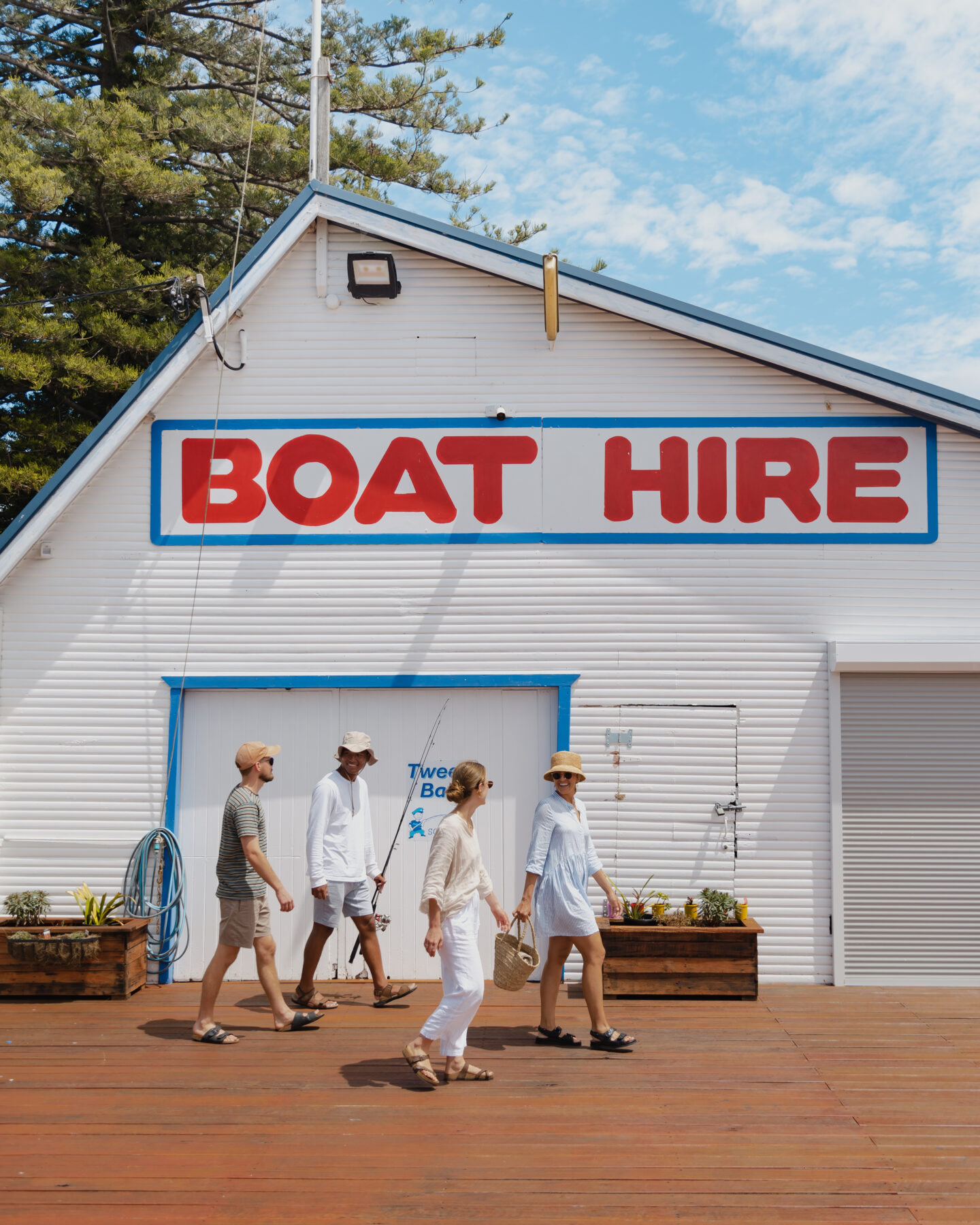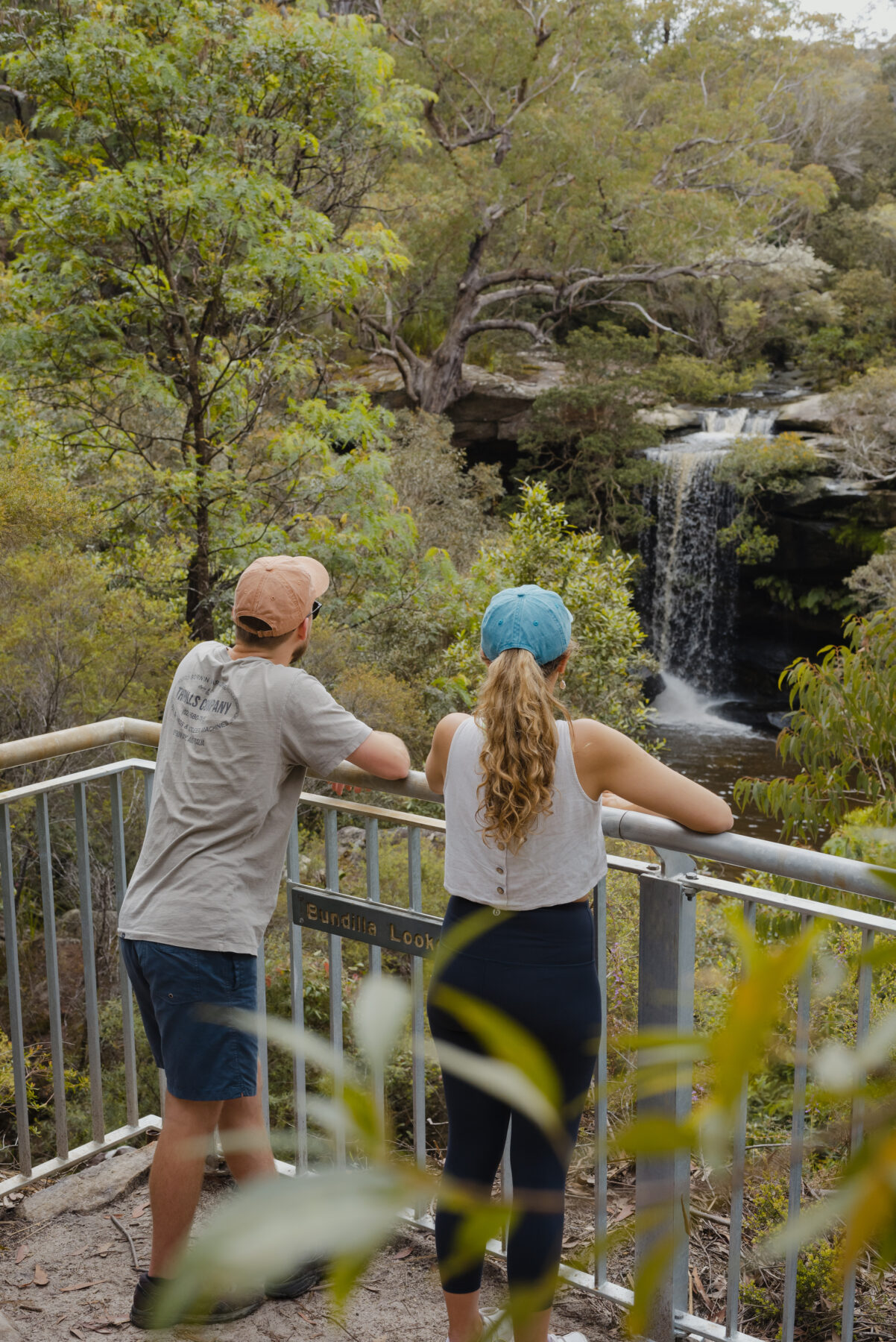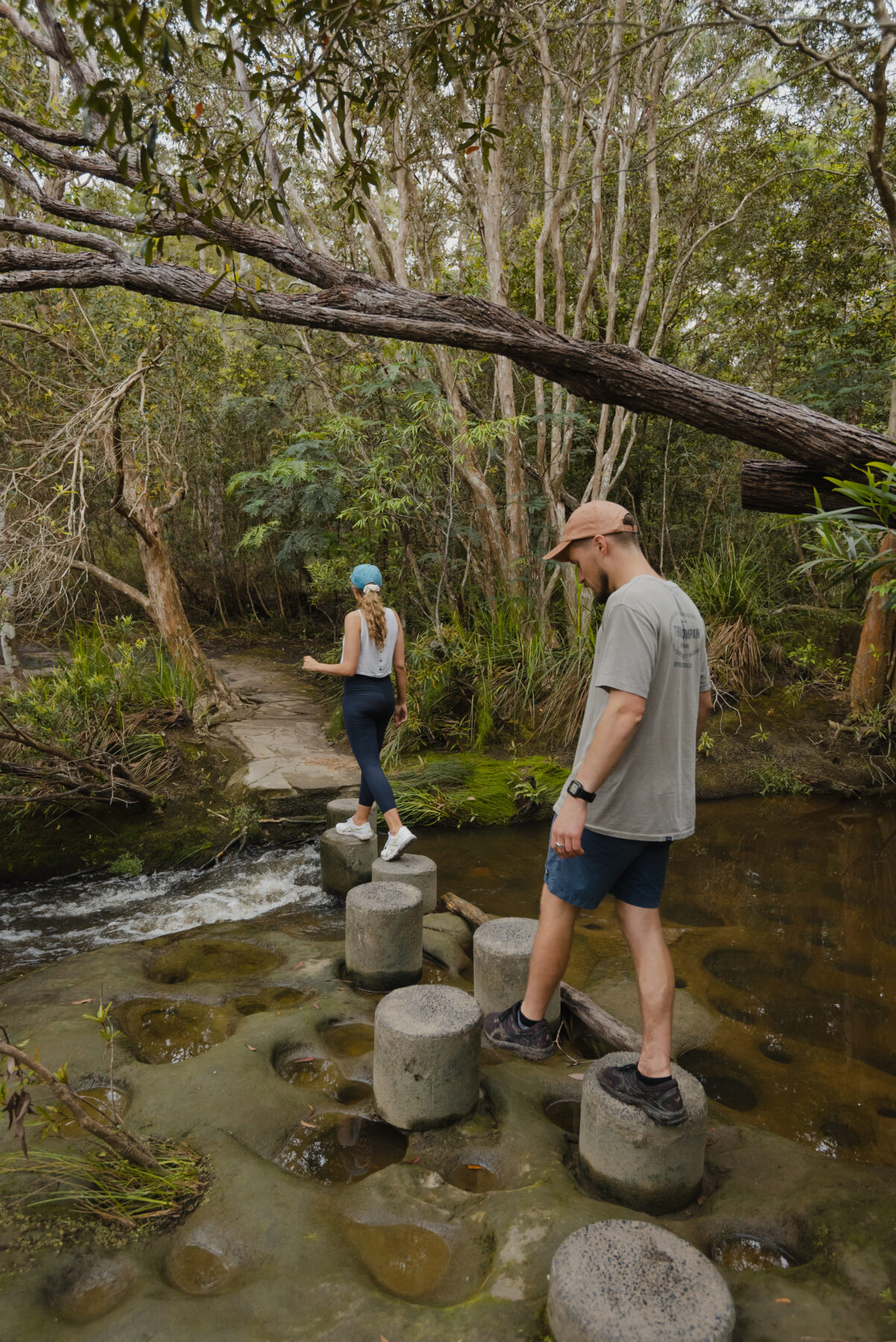The way of the water
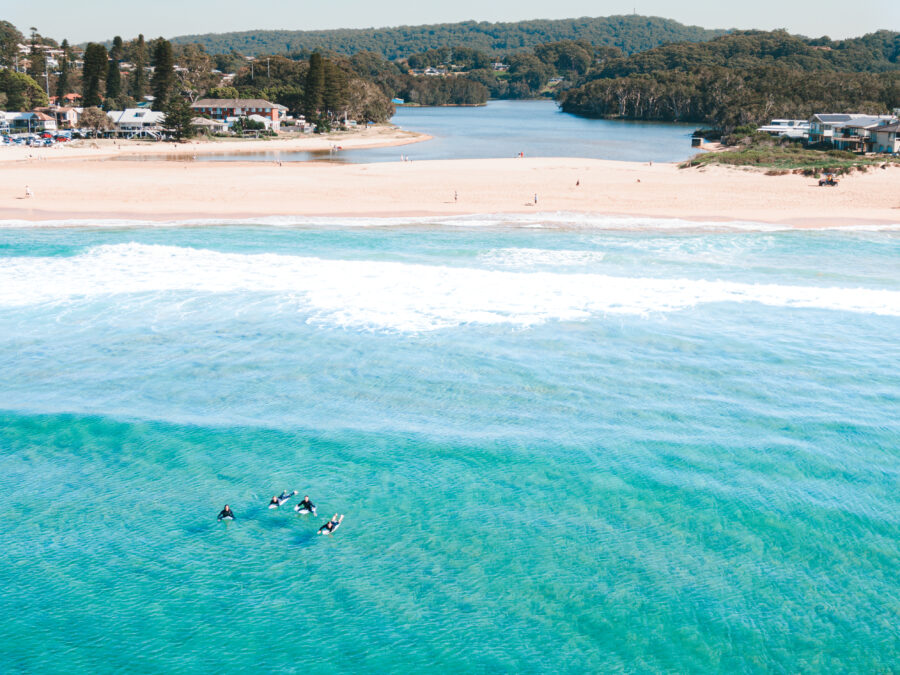
This article is brought to you by Destination Central Coast.
Located between Sydney and Newcastle, the Central Coast is a region brimming with abundant natural beauty best enjoyed with a boat in tow, a surfboard on the roof racks or a picnic hamper in the boot. Here are some of our favourite aqua attractions:
Central Coast beaches
The most famous of Central Coast beaches is undoubtedly Terrigal. Not only has Terrigal been the boutique shopping and dining hub of the region for generations, but the beach has always been a popular family friendly location. The surf club watches over ocean swimmers who meet up as the day breaks, families picnicking on the sand and beginner surfers. It’s worth having a dip at the small, recently restored ocean bath and walking across the multi-million-dollar boardwalk that skirts a cliff-face around to Terrigal Haven. The Haven is perfect for gentle swimming and snorkelling, and you’ll often see beginner scuba divers descending into the calm water. Fishermen love throwing in a line off the rocks, while kayakers and stand-up paddle boarders (SUP) also launch here. Grab a coffee afterwards from Haven Bay Kiosk in the Haven, or Freestate Café in Terrigal village.
Another popular stretch of sand is Avoca Beach, featuring a nostalgic old-world theatre and beach shacks holding onto their views of the waves. This beach is wide and long, with a mix of point and beach breaks for surfers. It’s also patrolled by lifeguards, and the surf club overlooks a large rock pool that’s ideal for toddler and beginner snorkellers. If the swell is too big, wander north along the sand to Avoca Lake (formerly Avoca Lagoon) for a gentle splash or to hire a pedalboat, kayak or SUP from ECO Certified family business Aquafun Avoca Lake.
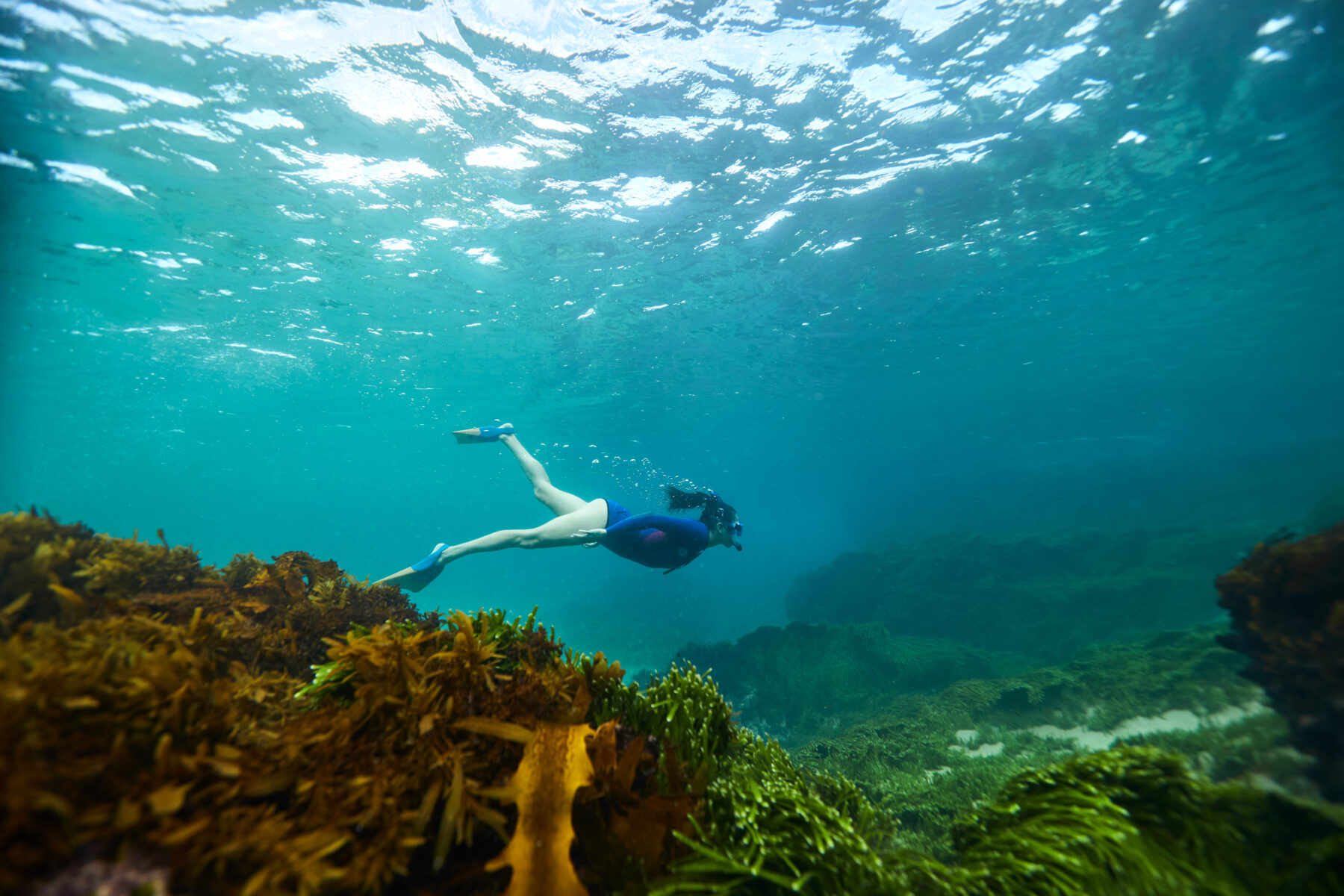
To the south, other top beaches are Copacabana and MacMasters, best known for their surf and tight-knit communities, while Maitland Bay is a hidden gem for visitors willing to hike through Bouddi National Park.
North of Terrigal, you will find Shelly Beach, a golden stretch that’s partially open to responsible dog walkers and a great spot for diving through waves between the flags. Even further north near Norah Head there’s the first National Surfing Reserve on the Central Coast, with world-class surfable options including two Point breaks, three Bomboras and two Reef breaks. If you’re keen on surfing, head here to get the low-down of the top spots.
Around the corner from Soldiers Beach is Cabbage Tree Harbour, which has a rock pool kids adore. For tips on how to make your beach vacation the best it can be, head to lovecentralcoast.com.
If you’re keen to mingle with locals and do your part in keeping your favourite holiday destination pristine, join a Take 3 for the Sea beach clean-up. The world-famous non-profit has its roots in the region, and has partnered with Central Coast Council to support the region’s ECO Destination journey, encouraging responsible tourism and, regularly holding volunteer days; visit their website to stay in the loop.
Lakes and lagoons
With the ocean to the east and countless waterfalls, rivers, creeks and lakes, it’s no surprise the Central Coast has blossomed into one of Australia’s first ECO Destinations. The certification with Ecotourism Australia recognises the Central Coast as “a world-class destination for sustainable, nature-based tourism” and acknowledges the region’s “superb natural beauty” and residents’ connection to the land.
Take 3 For the Sea is one example of how locals have amassed momentum to look after their environment and beyond, but it’s not the only initiative that encourages people to care for the region’s waterways. Central Coast Council has a Love Our Waterways project that monitors the water quality and more at places such as Terrigal and Wamberal lagoons, and Brisbane Water, ensuring you can enjoy the waterways year-round. Their website offers a treasure trove of ways to learn and explore by bike, foot or watercraft.
When it comes to lakes waterways, the Central Coast is blessed, with the sprawling Brisbane Water receiving most of the limelight. You can’t blame it; it’s a stunning introduction to road-trippers exiting from the M1 into Gosford, where sailing boats nest in its bays. But Brisbane Water stretches far beyond Gosford, spreading its fingers around the mangroves of Woy Woy, and the shallows of Davistown. Whether you’re into fishing, wakeboarding, sightseeing or kayaking, Brisbane Water is an idyllic spot.



Clockwise from left: Bushwalking to Mount Pleasant; Brisbane Water from above; Saratoga from above; Saratoga’s jetties. Image credits: James Horan courtesy of Destination Central Coast.
It’s not the only star attraction though, as in the north you will find Tuggerah Lakes, on the edge of Toukley and The Entrance. If you want to get onto the water, hire a row boat or barbecue boat from The Entrance, or go sailing, canoeing or fishing from Toukley, or SUPing at Canton Beach.
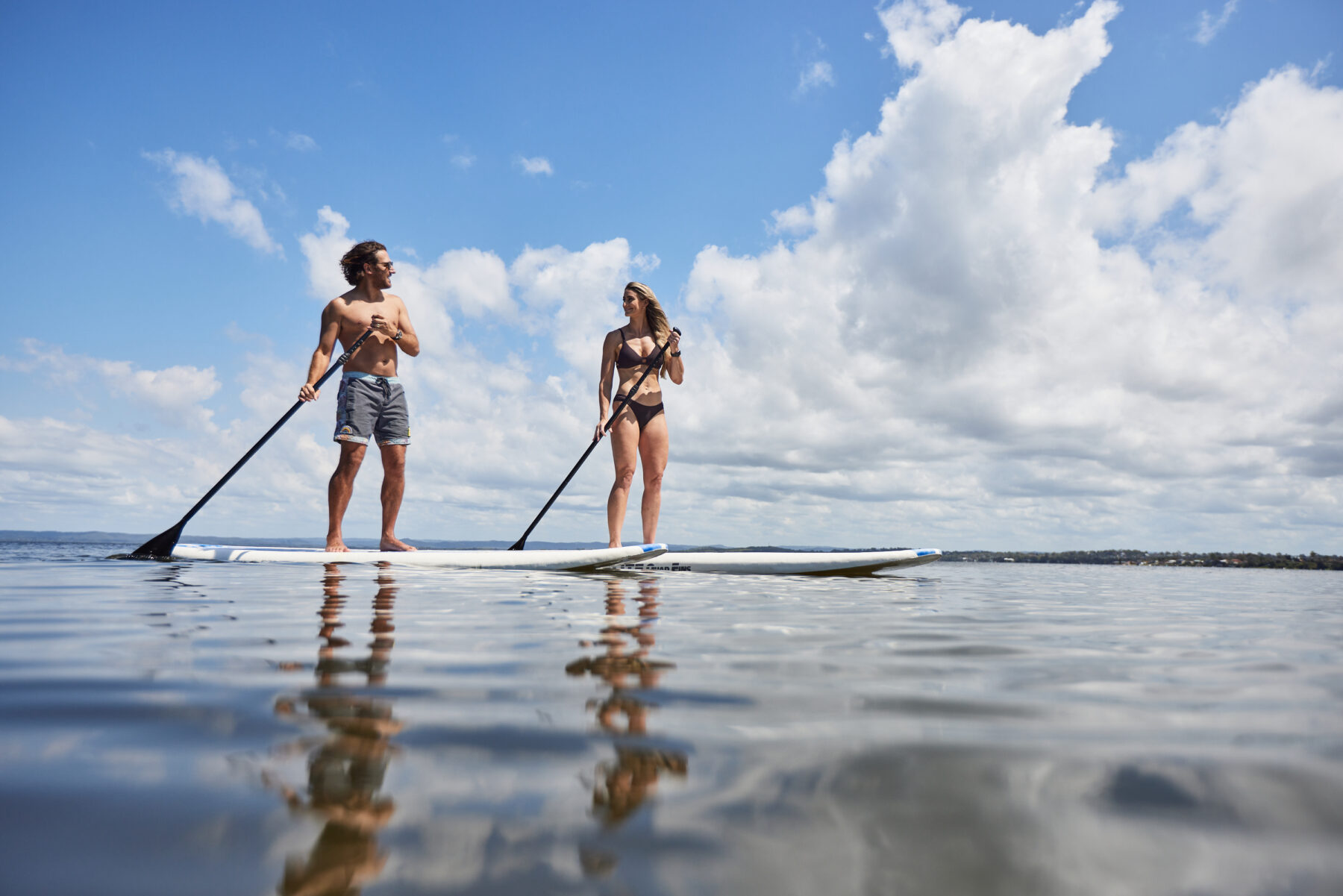
Another top spot from which to enjoy Tuggerah Lake is Long Jetty, where you can cycle along its foreshore, dotted with playgrounds and picnic tables, and wander its timber jetties. The longest jetty of which the suburb takes its name can be found opposite Archbold Road; there you will discover a small sandy beach and reclining chairs for lazy lake-side reading. Long Jetty is also home to a thriving creative community, so it’s worth spending a day there. Stop into Burnt Honey Bakery for a pastry or cookie, before walking or cycling down to the lake. Then head back into the hubbub for lunch at Mr Sha Shas, before strolling along “the strip” to pick up anything from vintage homewares to DIY beauty treatments. You can round out your day with a yoga class at Komuniti.
Rivers and creeks
On the Central Coast’s southern boundary you will find the stunning Hawkesbury River, a waterway that’s home to islands, gentle bays and sustainable oyster leases. Just off the M1 at Mooney Mooney, Broken Bay Pearl Farm – the only pearl farm in NSW. Join a tour to learn how the pearls are grown and harvested and the wildlife and history of the river. For an immersive, ECO Certified experience visit Sydney Oyster Farm Tours where you can dine in the very waters your oysters are harvested from.
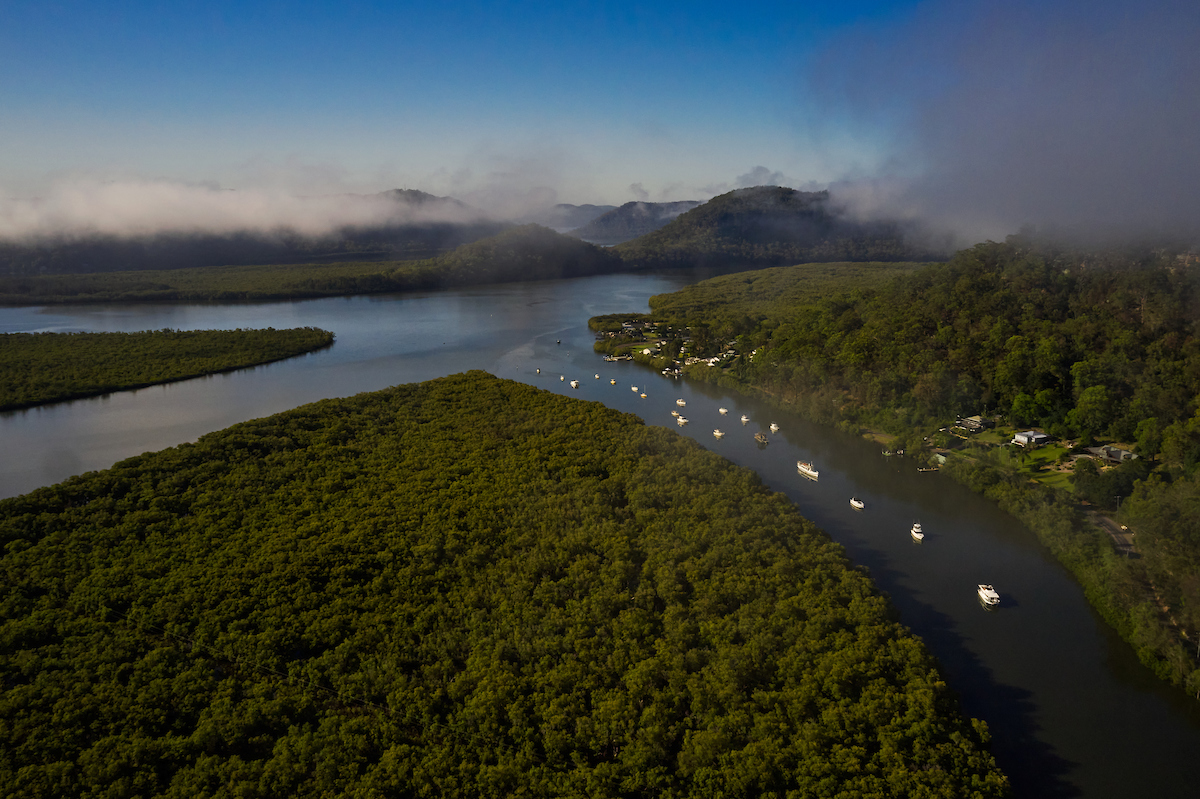
Although the majority of the Hawkesbury River is considered part of Sydney, the tiny postcode of Spencer is part of the Central Coast and makes for a relaxing drive along a road that winds its way through bushland and alongside tributaries. Stop at Spencer for a cuppa or bite to eat, join an educational kayak tour, go fishing, or set off on the Old Great North Road to learn about the Dharug Aboriginal peoples and convict heritage.
Spotting a waterfall in Brisbane Water National Park and creek crossing in Piles Creek Loop Brisbane Water National Park. Image credits: James Vodicka
Waterfalls
Autumn, spring and summer are perfect for exploring the Central Coast Hinterland, where quiet walking trails lead to picturesque waterfalls and refreshing swimming holes. The waterfalls attract road-trippers from Sydney and Newcastle, and are popular with local families who often pack their swimmers and a picnic. Although winter rain brings gushing falls, it’s best to leave this time to intrepid travellers, especially if you’re visiting with young children.
Not far from the M1 is Girrakool Falls and picnic area in Brisbane Water National Park, where there are barbecues and plenty of green space for kids to run around. Follow the recently upgraded Piles Creek Loop, which will see you crossing a suspension bridge on your way to the waterfalls. Kids will love meeting the local brush turkeys and sunbathing lizards. The park also features Kariong Brook Falls, reached by a 3.2km (one-way) bush track from Staples Lookout. These falls are off-the-beaten path, and you’ll need an adventurous spirit to reach them as the trail is steep and thickly vegetated – be sure to check NPWS alerts and closures ahead of your trip.
If you’ve visited all of those and are seeking somewhere different, head to Popran National Park, in Mangrove Mountain. Start at Ironbark Falls Reserve and follow a path to the little-known Ironbark Falls. You’ll need a 4WD to reach the picnic area off Ironbark Road due to erosion; if you don’t have one, you can walk the final 850 metres.
A touch to the north is Strickland State Forest, an ecotourism attraction that has been inducted into the Hunter Central Coast Tourism Awards Hall of Fame. No doubt Strickland Falls, one of the region’s most beautiful natural assets, has something to do with this. There are no fees to access the forest, which has plenty of walking trails, a picnic area and even an arboretum.
While exploring the Central Coast Hinterland, it’s worth calling into the region’s celebrated organic farms, such as Grace Springs Farm, Meliora Farm, and Fanelli Organics. Some of the farms have open days, run tours, and/or have roadside fruit and veg stands. Find out more here.
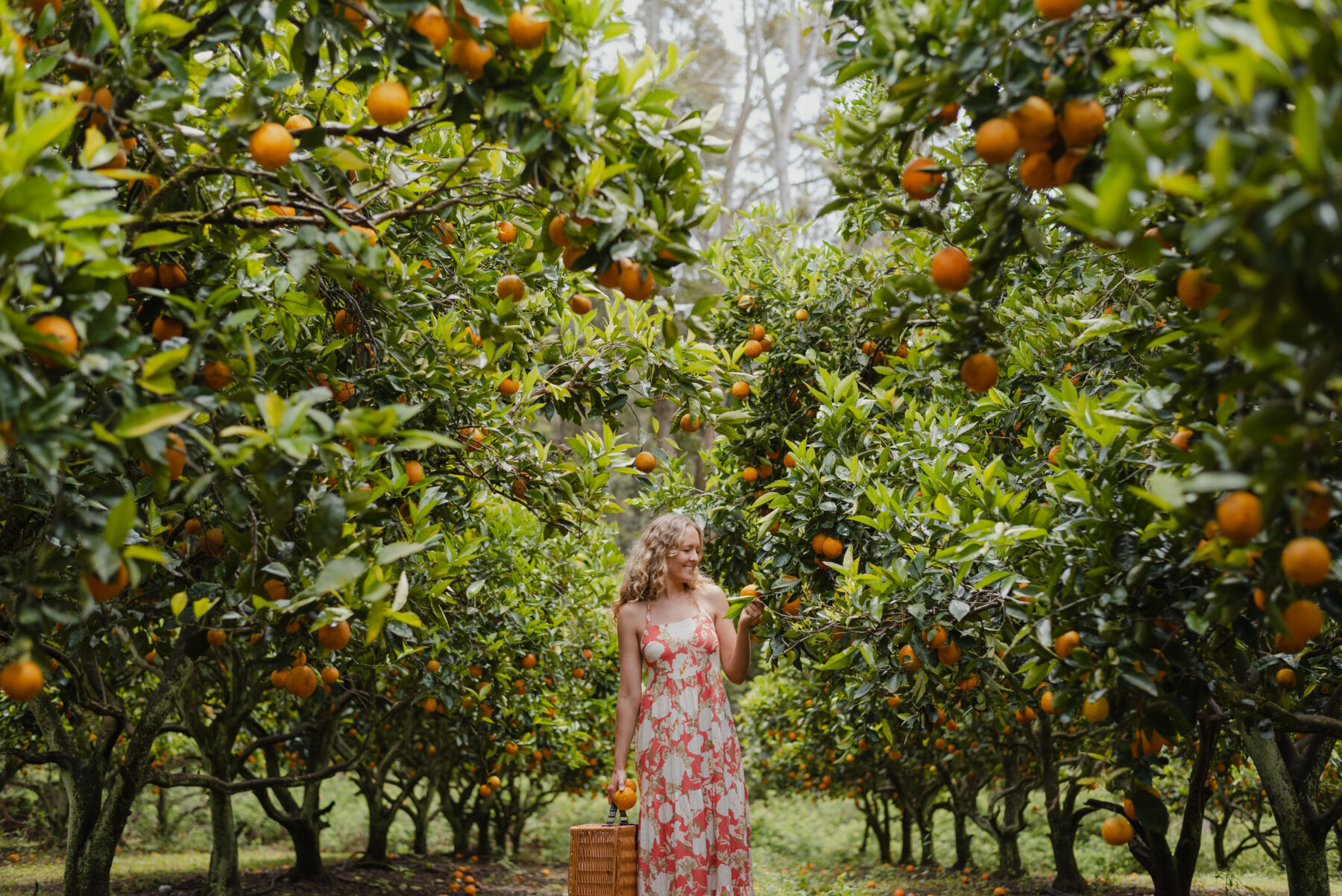
Whether you visit for the beaches or prefer a jaunt through bushland to a hidden waterfall, the NSW Central Coast offers superb natural beauty, connection to the land and a sense of freedom and space.
Hemmed by hinterland, the Pacific Ocean and vast inland waterways, guests can easily immerse themselves in the region’s unique natural environment. Tread lightly and go slow on the Central Coast, a slice of East Coast paradise.
Visit Love Central Coast’s new waterways and coastlines hub now.
This Love Central Coast project is brought to you by Destination Central Coast and jointly funded by the Australian and NSW governments under the Bushfire Local Economic Recovery Fund.
